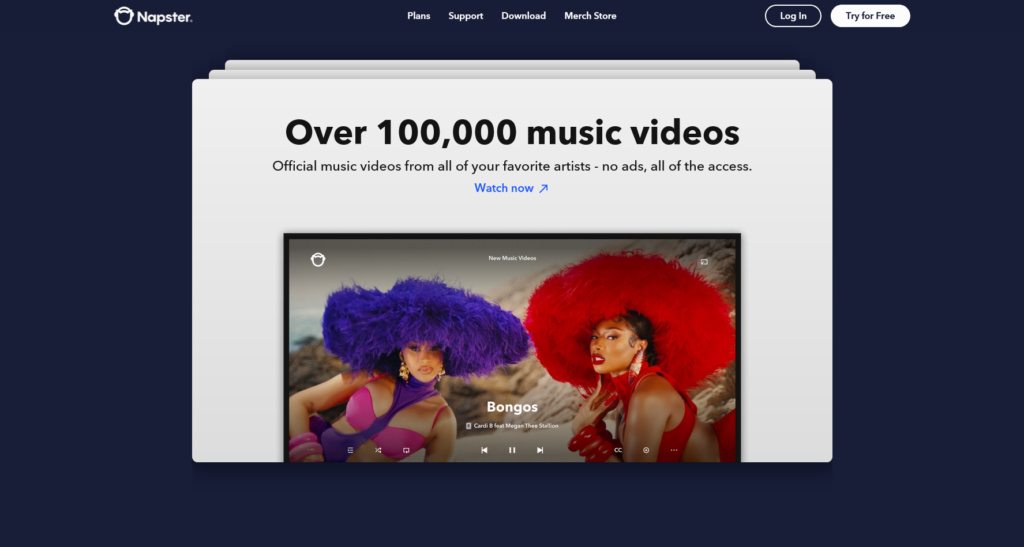Napster, NVIDIA and Other News

Napster, the Music File-Sharing Platform, Turns 25
June 1 marks the 25th anniversary of the launch of Napster, a program that has played a significant role in the history of file sharing and digital music. in 1999, 17-year-old Shawn Fanning developed Napster, named after his online nickname, over the course of a few months with the help of his IRC chatroom friends. napster utilizes peer-to-peer (P2P) file-sharing technology. Napster uses peer-to-peer (P2P) file sharing technology and has a central database that indexes all the songs shared by users. Because of its simplicity and ease of use, Napster quickly gained popularity after its launch, amassing 26.4 million users at its peak, and became the gateway software for many early Internet users to explore music, and by extension, the MP3 format and MP3 players. It also caused panic in the record industry, so much so that in February 2000, record executives gathered at the Four Seasons Hotel in Los Angeles to discuss the threat posed by the program. Napster’s experience was so well established that a new crop of similar programs quickly appeared on the market, and BitTorrent began to gain in popularity; it also shook up the music industry’s record-centric sales model, providing a new opportunity for the iTunes Music Store and for the iTunes Music Store to become more popular, as well as for the music business to become more popular. It also shook up the music industry’s record-centered sales model, paving the way for the iTunes Music Store and later streaming services like Spotify.
TikTok Denies Splitting Codes for U.S. Markets
In a post on X on May 31, TikTok’s official account vaguely denied a previous Reuters report that it was spinning off a suite of technologies exclusively for the U.S. market.
According to Reuters, citing people familiar with the matter, hundreds of ByteDance and TikTok engineers in the US and China have been given the “tedious and dirty job” of separating millions of lines of recommendation-related code from the Jieyin codebase since late last year, as well as eliminating any information related to Chinese users. This is both in response to the recently enacted U.S. mandatory spin-off bill, which requires TikTok to sell its U.S. operations by January of next year or be banned, and to comply with China’s export restrictions on recommendation technology. The work is expected to take more than a year to complete due to the complexity of the code, and future U.S. versions may not perform as well as the current one. At one point, TikTok executives reportedly considered open-sourcing some of the code for transparency.
SpaceX Cancels First Private Circumnavigation of the Moon
On May 31, SpaceX announced via its official X account that it would cancel dearMoon, the first private circumlunar flight, due to delays and uncertainty.
Originally announced in 2018, dearMoon was to have carried Japanese billionaire Yusaku Maezawa and 10 other crew members; if successful, it would have been SpaceX’s first manned spaceflight to launch from Earth, orbit the Moon, and return. Tomosaku Maezawa has pumped hundreds of millions of dollars into the program, and is also hosting a competition to select fellow travelers.
However, dearMoon has been slow to follow through, with the first test flight not taking place until April 2023, but with a series of tests to follow to complete a safe launch, controlled flight, refueling in space, and more. Over time, as SpaceX’s primary focus shifts to its Starlink and Service NASA partnership programs, dearMoon is not expected to become a reality until after 2030 at the earliest. Tomosaku Maezawa, on the other hand, has seen his assets shrink by more than half from what they were in 2018 and has already had his ‘space addiction’ on the International Space Station aboard a Russian Soyuz spacecraft in 2021.
NVIDIA Introduces Graphics Card Standard for Small Form Factor Chassis
On June 2, NVIDIA announced on its website the launch of the SFF-Ready (Small Form Factor) graphics card size standard, which is designed to respond to the popularity of SFF chassis and to make it easier for users of SFF-sized chassis to purchase graphics cards.
According to NVIDIA, SFF-Ready Enthusiast GeForce Cards (for SFF small form factor hardcore gamer GeForce cards) are RTX 4070 or above that meet the following dimensional requirements: (1) maximum height 151 mm (including power cord bend radius); (2) maximum length 304 mm; and (3) maximum width 50 mm or 2.5 inserts. width 50 mm or 2.5 slots wide. NVIDIA believes that these dimensions ensure adequate space, clearance, and maneuverability within the chassis, and also provide a standard for future design dimensions for manufacturers to ensure that the chassis does not have to be replaced when upgrading GPUs. NVIDIA has also introduced a standard for chassis compatible with SFF-Ready graphics cards.
As of June 2, 2024, there are 36 graphics cards from NVIDIA and partners that are SFF-Ready sized, and more than 20 chassis that are compatible with SFF-Ready graphics cards are available.
It’s worth pointing out that there’s no consensus definition of SFF size, and it’s often used in marketing as a convenience for manufacturers, and is more commonly measured in liters of chassis volume. In recent years, the size of high-end graphics cards has also been expanding rapidly, and NVIDIA’s definition of the SFF-Ready standard is only more compact than the standard version, with the maximum size allowed being no less than that of a GTX 1080 in terms of volume.
Posted on June 3, 2024 uninstalledly editor